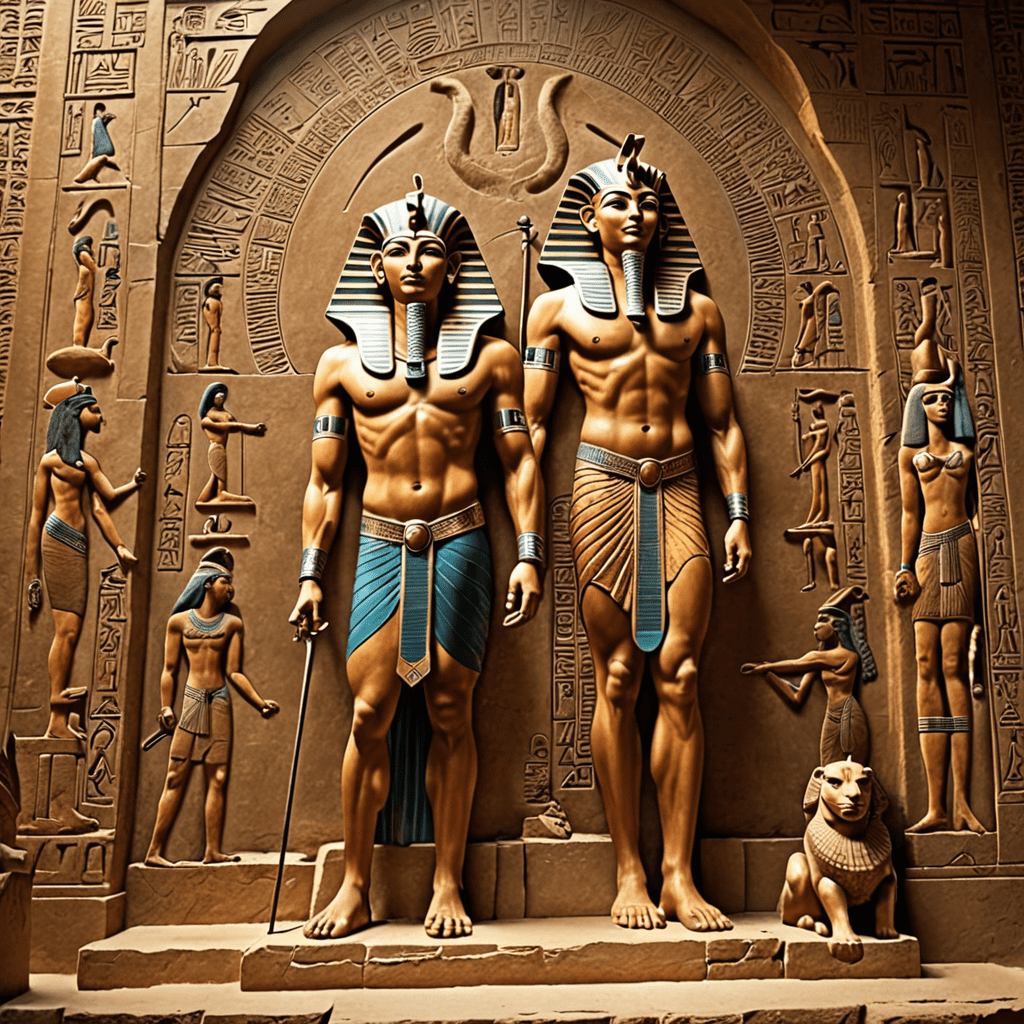The Myth of the God Min in Egyptian Mythology
Who is the God Min in Egyptian Mythology?
The ancient Egyptian god Min was primarily associated with fertility and agriculture. Often depicted as a man with an erect phallus, symbolizing procreation and abundance, he was considered a protector of the harvest and a symbol of male virility. Min was also linked to the Eastern Desert and was revered particularly in the city of Akhmim.
What were the Symbols and Representations of Min?
Min was typically depicted wearing a crown with two large feathers and carrying a flail in his right hand to represent his role in fertility and agriculture. He is often shown standing on a plinth with both arms raised as a gesture of celebration and power. Additionally, the lettuce plant was sacred to Min and was a common symbol associated with him.
What Role Did Min Play in Egyptian Mythology?
In Egyptian mythology, Min was believed to be an important deity who ensured the fertility of the land and the prosperity of the people. He was closely linked to the annual flooding of the Nile River, which was essential for the success of agriculture in ancient Egypt. Min was also viewed as a warrior god who protected Egypt from its enemies and defended the pharaoh in battle.
How was Min Celebrated in Ancient Egypt?
Min was honored through various religious festivals and rituals dedicated to him throughout the year. The most significant celebration of Min was the annual festival of the “Going Forth of Min,” held in Akhmim, where his cult center was located. The festival involved music, dancing, feasting, and fertility rites aimed at ensuring a bountiful harvest and reaffirming Min’s role in Egyptian society.
FAQ about the Myth of the God Min in Egyptian Mythology
Who was the God Min in Egyptian mythology?
Min was an ancient Egyptian god of fertility and agriculture associated with the growth and harvest of crops. Known as the “Lord of the Harvest,” he was depicted as a man with an erect phallus, symbolizing his role in procreation and abundance.
What was Min’s significance in Egyptian mythology?
Min was revered for his role in ensuring fertility, both in the fields and in human reproduction. Egyptians believed that by honoring Min, they could ensure bountiful harvests and successful breeding of livestock.
What symbols were associated with the God Min?
Min was often represented with symbols like the lettuce plant, which was believed to have aphrodisiac properties. He was also linked to the white bull, as bulls were seen as symbols of strength and fertility in ancient Egypt.
Where was Min primarily worshipped?
Min was primarily worshipped in the ancient Egyptian city of Akhmim, located in Upper Egypt. The annual festival dedicated to Min included rituals and celebrations to honor his role in sustaining the agricultural cycle.
How did Min’s worship impact Egyptian society?
The worship of Min played a significant role in Egyptian society by reinforcing beliefs in fertility, growth, and abundance. The rituals and ceremonies associated with Min’s cult were





